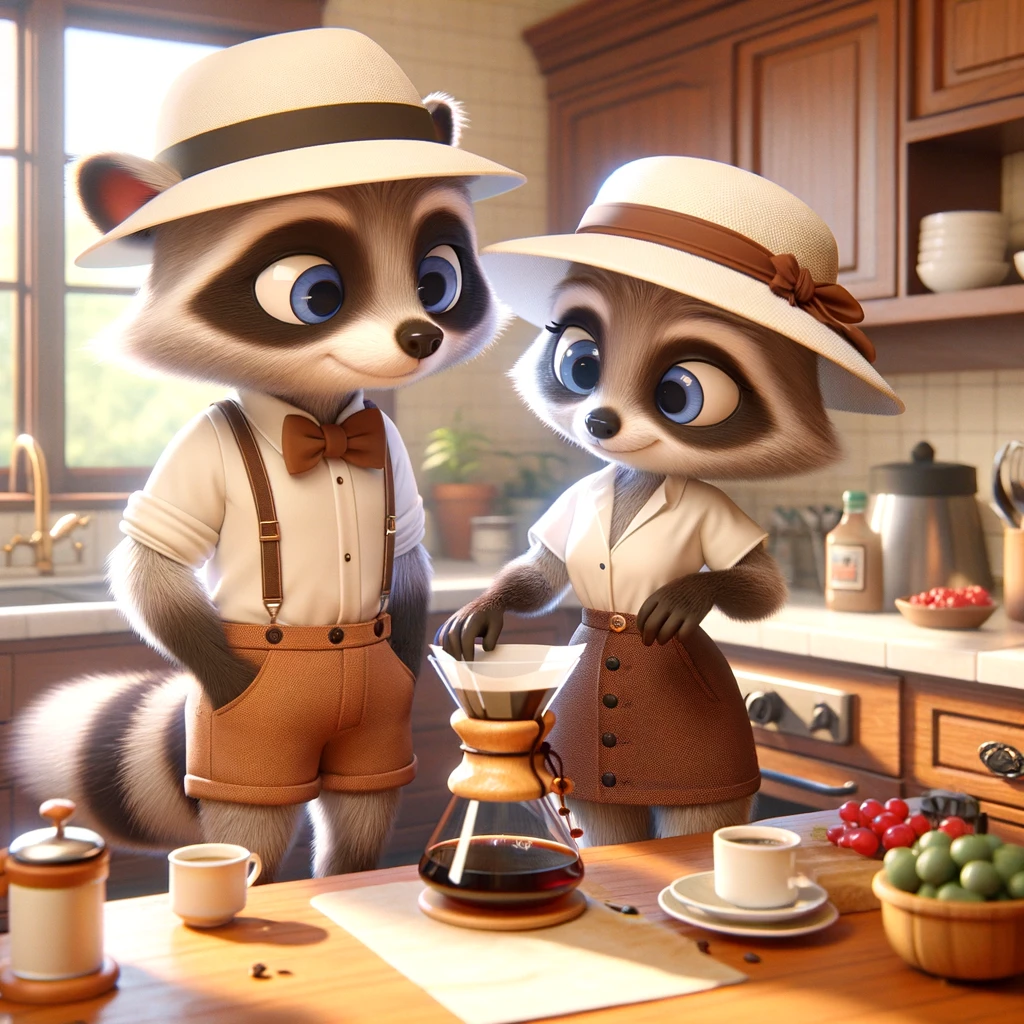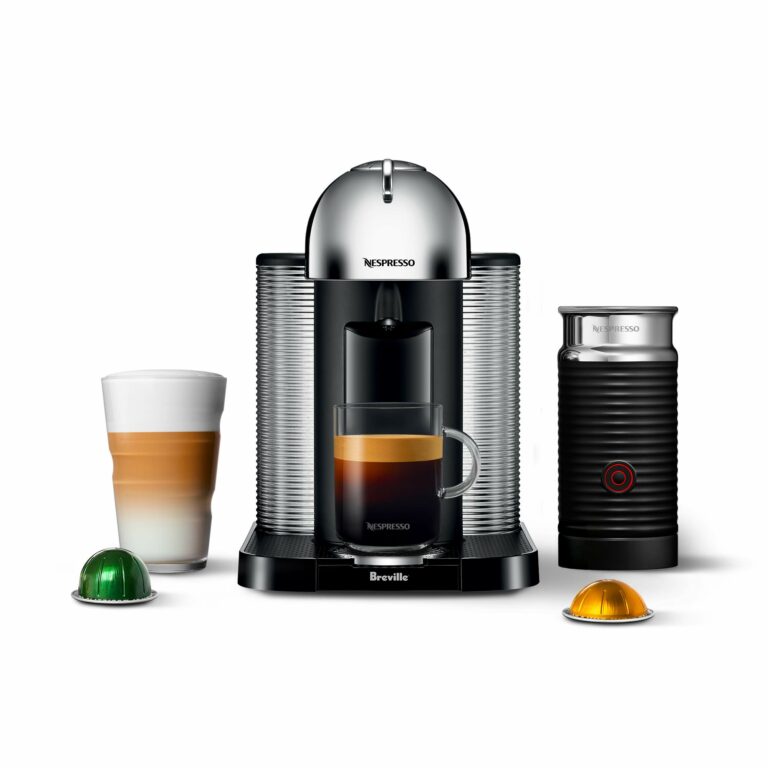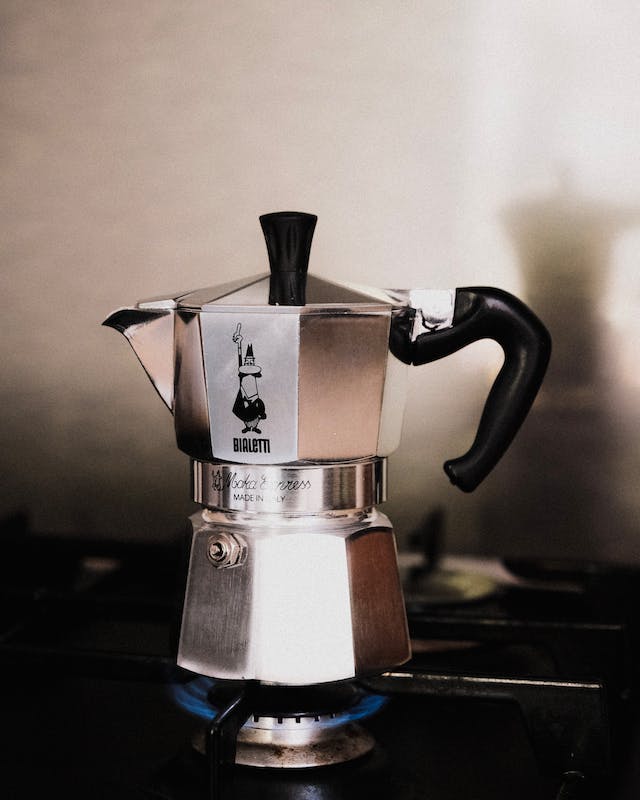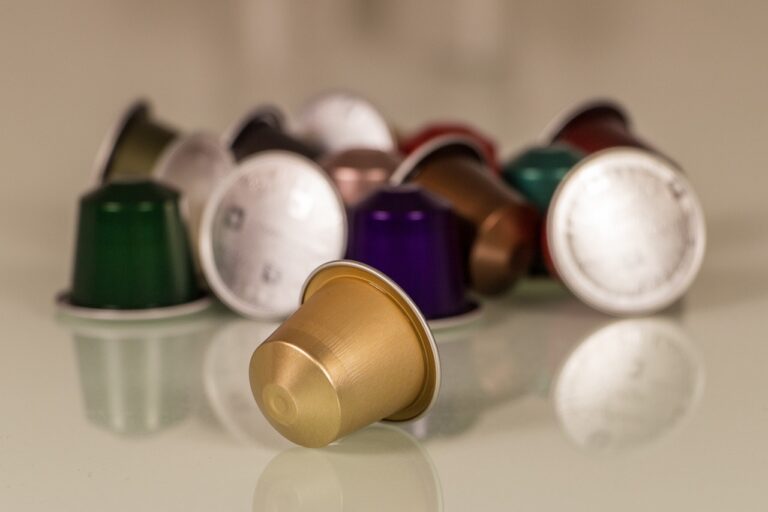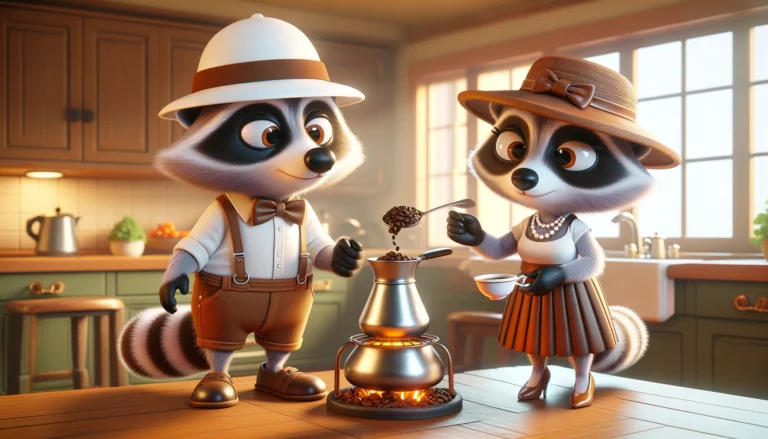Pour Over Coffee Brewing Method: Mastering the Art of Coffee Perfection
Pour-over coffee is a revered method in specialty coffee due to its ability to unlock the full potential of coffee beans. This manual brewing technique allows for a high degree of control over the brewing process, which can result in a cleaner, more nuanced cup of coffee compared to other methods. The pour-over process involves hot water being manually poured in a controlled and steady stream over coffee grounds, with gravity pulling the water through the grounds and filtering straight into your cup or carafe. It’s a simple yet precise method, celebrated for highlighting the complex flavors of the coffee.
With pour-over coffee, every aspect of the brewing process can be fine-tuned to your preference, from the grind size of the beans to the temperature and pouring rate of the water. The minimal equipment required typically includes a pour-over brewer, filters, a kettle, and a grinder to ensure freshly ground beans. Mastering this method does not necessarily require professional-level skills but benefits from understanding the fundamentals and a bit of practice. This hands-on technique connects you to the brewing process, offering a meditative experience that is as rewarding in ritual as in taste.
FTC: This post may contain affiliate links, and I may earn a small commission when you click on the links at no additional cost to you. As an Amazon/ShareASale Affiliate, I earn from qualifying purchases. You can read my full disclaimer here!
Key Takeaways
- Pour-over coffee showcases the unique flavors of the beans through a controlled brewing process.
- Mastery of pour-over brewing offers customization at each step, enhancing the brewing experience.
- Regular practice and attention to detail are key to perfecting the pour-over technique.
The Basics of Pour-Over Coffee
Pour-over coffee brewing is a method that allows you to bring out the rich, complex flavors of your coffee. It’s about precision and control, enabling you to craft the best pour-over coffee with the right equipment and technique.
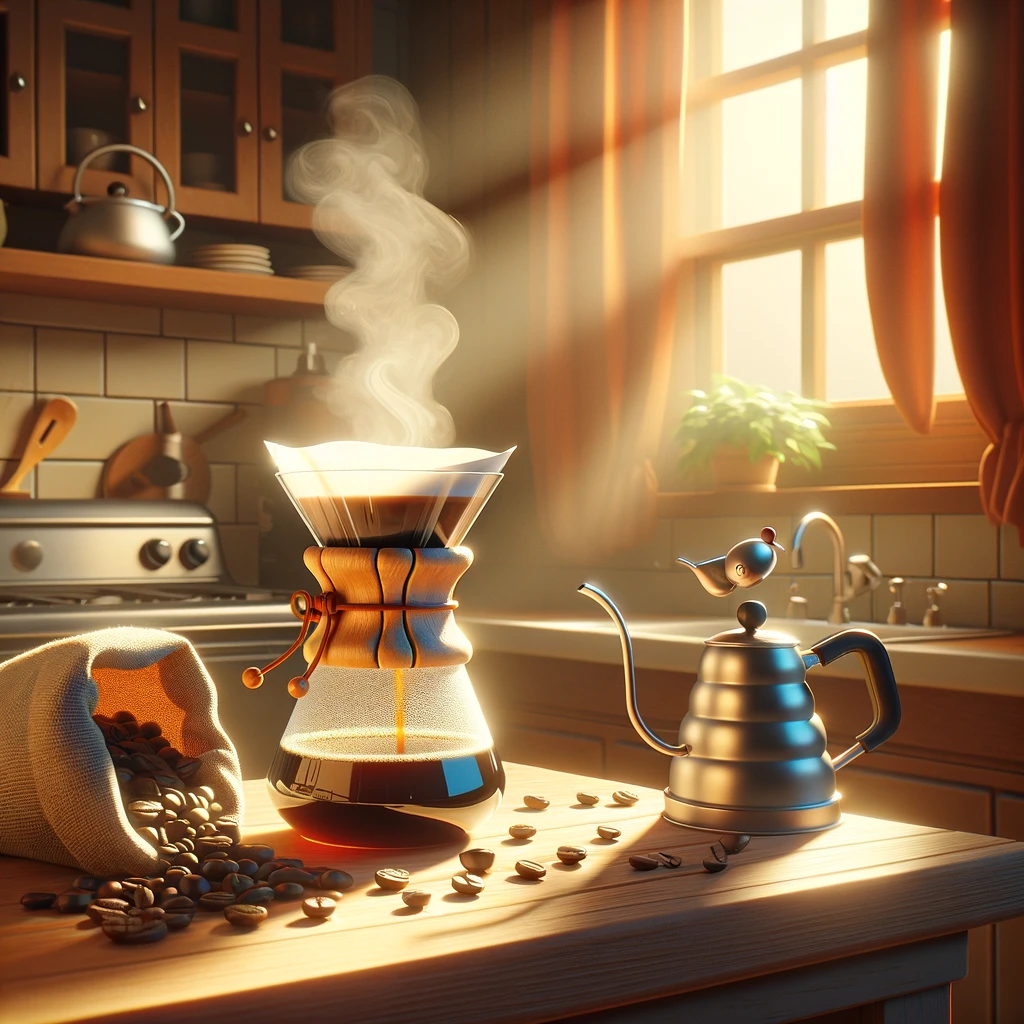

Understanding the Pour Over Brew Method
The pour-over method involves pouring hot water over coffee grounds in a filter. The water drains through the coffee and filters into a carafe or mug. The key to this method is controlling the speed and distribution of the water, which affects the extraction of flavors from the coffee grounds. A consistent and slow pour leads to a cup that is clear and complex in taste.
Equipment Essentials
To make pour-over coffee, the essential equipment you need includes:
- Coffee Maker: A pour-over coffee maker typically comprises a dripper that holds the filter and grounds.
- Kettle: A gooseneck kettle gives you control over the water flow.
- Scale: To measure coffee beans and water accurately.
- Grinder: A burr grinder produces uniform ground sizes.
- Thermometer (optional): For precise water temperature if your kettle has no built-in gauge.
- Filter: Compatible with your pour-over dripper.
- Timer: For timing your brew.
Selecting Your Coffee Beans: Specialty Coffee
The choice of coffee beans is critical for pour-over brewing. Ideally, select specialty coffee beans that are freshly roasted. Coffee roasters provide a variety of beans with different origins and roasting levels. Look for beans that suit your taste preference, whether you favor a light, medium, or dark roast. Remember, the fresher the roast, the better the flavor notes you can extract.
Preparation for the Pour Over Brewing Technique
Before you begin brewing, precise preparation is vital for a perfect cup of pour-over coffee. You’ll need to focus on grinding your coffee, measuring the correct amounts, and setting up your equipment properly.
Grinding Your Coffee
Grind size is critical to extracting the optimal flavor from your coffee beans. For pour-over, a medium-coarse grind is usually recommended.
- Fine Grind: Can lead to over-extraction and bitterness.
- Coarse Grind: This may result in under-extraction and a weak brew.
Measuring Coffee and Water
The ratio of coffee to water affects the strength and flavor of your brew. A common starting point is a 1:15 ratio, which translates to 15 grams of water for every gram of coffee.
- Coffee Weight: Begin with 15 grams of coffee for a standard cup.
- Water Temperature: Opt for water between 195°F to 205°F for the best extraction.
Setting Up Your Brewer
Ensure your pour-over brewer is clean and positioned securely over your cup or carafe. Insert a filter and rinse it with hot water to remove any paper taste, and preheat your brewer. Dispose of the rinse water before starting your brew.
The Brewing Process
Precision and timing are crucial for optimal coffee extraction in pour-over coffee brewing. This section will guide you through the essential steps to brew coffee effectively using the pour-over method.
The Initial Pour
Your first task is to saturate the coffee grounds with hot water. Start by pouring enough water to wet all the grounds, which should be about double the weight of the coffee in water. For instance, if you have 20g of coffee, use 40g of water. This initial pour is crucial for what’s known as the “bloom,” allowing the coffee to degas and ensuring an even brew.


Managing the Brew Time
The total brew time should be around 3 to 4 minutes for a balanced extraction, with the water temperature between 195°F to 205°F (~90°C to 96°C). After the bloom, continue pouring water in a slow and steady spiral, keeping the water level consistent. This methodical addition ensures an even extraction and a full-flavored brew.
Final Pour and Drip Through
Approaching the end of the brew time, make your final pour. Gently pour the remaining water over the grounds to reach the desired total brew weight—aim for a 1:15 to 1:17 coffee-to-water ratio. As the water drips through the grounds, it should take about 30 seconds for the last water to filter through before you enjoy your cup of pour-over coffee.
Pour Over Techniques and Tips
In pursuit of the perfect cup of coffee, mastering your pour-over techniques and adjusting variables such as water temperature and coffee-to-water ratio can lead to a harmonious balance of flavor.
Pouring Technique
Your pouring technique is pivotal to achieving an even extraction. Use a gooseneck kettle for better control, and start by wetting all the grounds evenly in a spiral motion. This initial pour, known as the bloom, should last about 30 seconds with enough water to saturate the grounds. Continue pouring in a slow, steady spiral, moving from the center outwards and back to the center.
- Spiral Pour: Ensures even extraction.
- Gooseneck Kettle: Provides control over the pour.
Maintaining Consistent Brews
For a consistent brew each time, keep the following parameters the same:
- Water Temperature: Ideal between 195°F and 205°F.
- Coffee Dripper: Choose a reliable dripper like the Kalita Wave for consistent results.
- Water to Coffee Ratio: Generally, a 1:16 ratio of coffee to water is a good starting point.
Pro Tip: Use a scale to weigh your coffee and water for precision.
Taste Adjustment and Experimentation
Don’t be afraid to adjust variables to fine-tune your coffee’s taste. Experiment with the brewing temperature or try a different water-to-coffee ratio to alter the flavor profile. If your coffee tastes too bitter, it might be over-extracted, sour, and under-extracted. Adjusting the grind size can also be effective—coarser for a faster pour and finer for a slower one.
- Brewing Temperature: A slight increase can enhance extraction, and a decrease can reduce bitterness.
- Grind Size Adjustments: Affects the rate of extraction and brew time.
- Perfect Pour: Achieved through practice, impacts flavor balance.
Cleaning and Maintenance
Proper cleaning and maintenance of your pour-over coffee maker, coffee grinder, and automatic drip coffee maker are essential to ensure the longevity of your equipment and the quality of your coffee.
Pour-Over Coffee Maker:
- Daily Cleaning:
- After each use, rinse the brewer with hot water to remove coffee grounds and oils.
- Use a soft-bristled brush or sponge with warm water and mild dish soap for a thorough clean.
- Ensure all soap is rinsed off with hot water to prevent taste contamination.
- Weekly Maintenance:
- For deeper cleaning, use water and vinegar to dissolve mineral deposits.
- Soak the coffee maker in this solution for 30 minutes, then rinse thoroughly.
Coffee Grinder:
- Empty any remaining coffee grounds from the hopper.
- Clean removable parts with warm, soapy water and let them air dry before reassembling.
- Brush the grinding area with a dry, stiff brush to remove stubborn particles.
- For burr grinders, adjust the burrs to the coarsest setting for easier cleaning between them.
Automatic Drip Coffee Maker:
- Fill the reservoir with equal vinegar and water and run a brewing cycle.
- After the cycle, run two to three cycles with clean water to rinse any vinegar residue.
- Wipe down the exterior with a damp cloth and mild detergent.
- When applicable, clean the carafe and removable parts weekly, using soapy water or a dishwasher.
Frequently Asked Questions
This section will answer common questions to help you understand the pour-over coffee brewing method and get the best out of your coffee experience.
What is the optimal temperature for brewing pour-over coffee?
Your brewing water should be around 195°F to 205°F (90°C to 96°C). This range is key to extracting the right flavors without over-extracting and causing bitterness.
Can you explain the 60/40 method for pour-over brewing?
The 60/40 method, developed by Tetsu Kasuya, involves dividing your pour into two phases: the first 60% of the water balances the sweetness and acidity, while the remaining 40% influences the strength of the brew.
What are the main benefits of using the pour-over method to make coffee?
The pour-over method gives you control over the brewing time and temperature, resulting in a clean cup with pronounced flavors and aromas.
How does the taste of pour-over coffee compare to drip-brewed coffee?
Pour-over coffee typically has a more complex taste profile than drip-brewed coffee, with a lighter body and more nuanced flavors due to the more precise brewing process.
What is the best water to coffee grounds ratio for the pour-over method?
A good starting point is a ratio of 1:16, or 1 gram of coffee, to 16 milliliters of water. You may adjust this ratio to taste.
How do I choose the right pour-over coffee maker for my needs?
Consider the material (glass, ceramic, metal, or plastic), size, and filter type. Your choice should support the taste you prefer and match the quantity of coffee you typically make.


